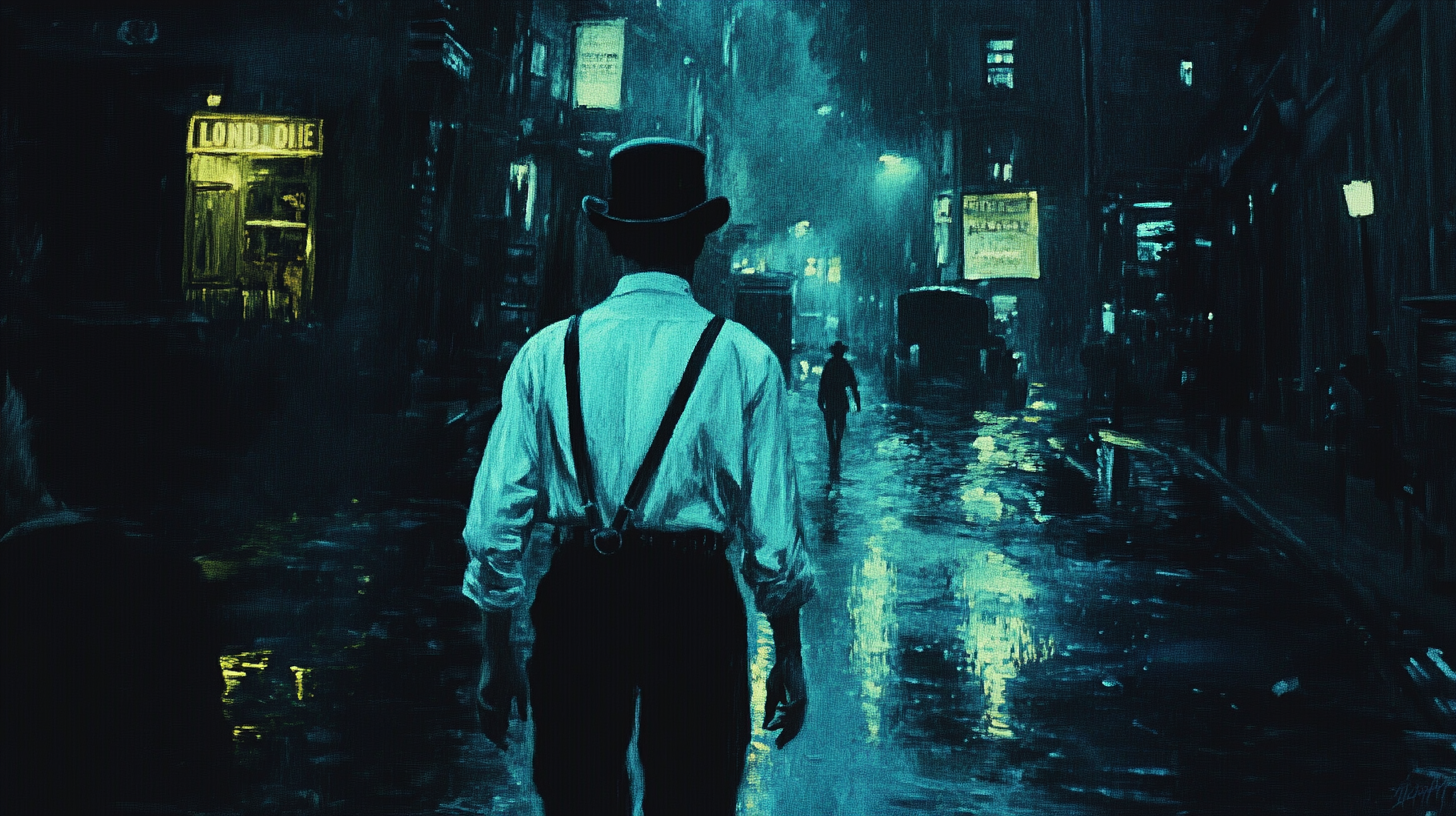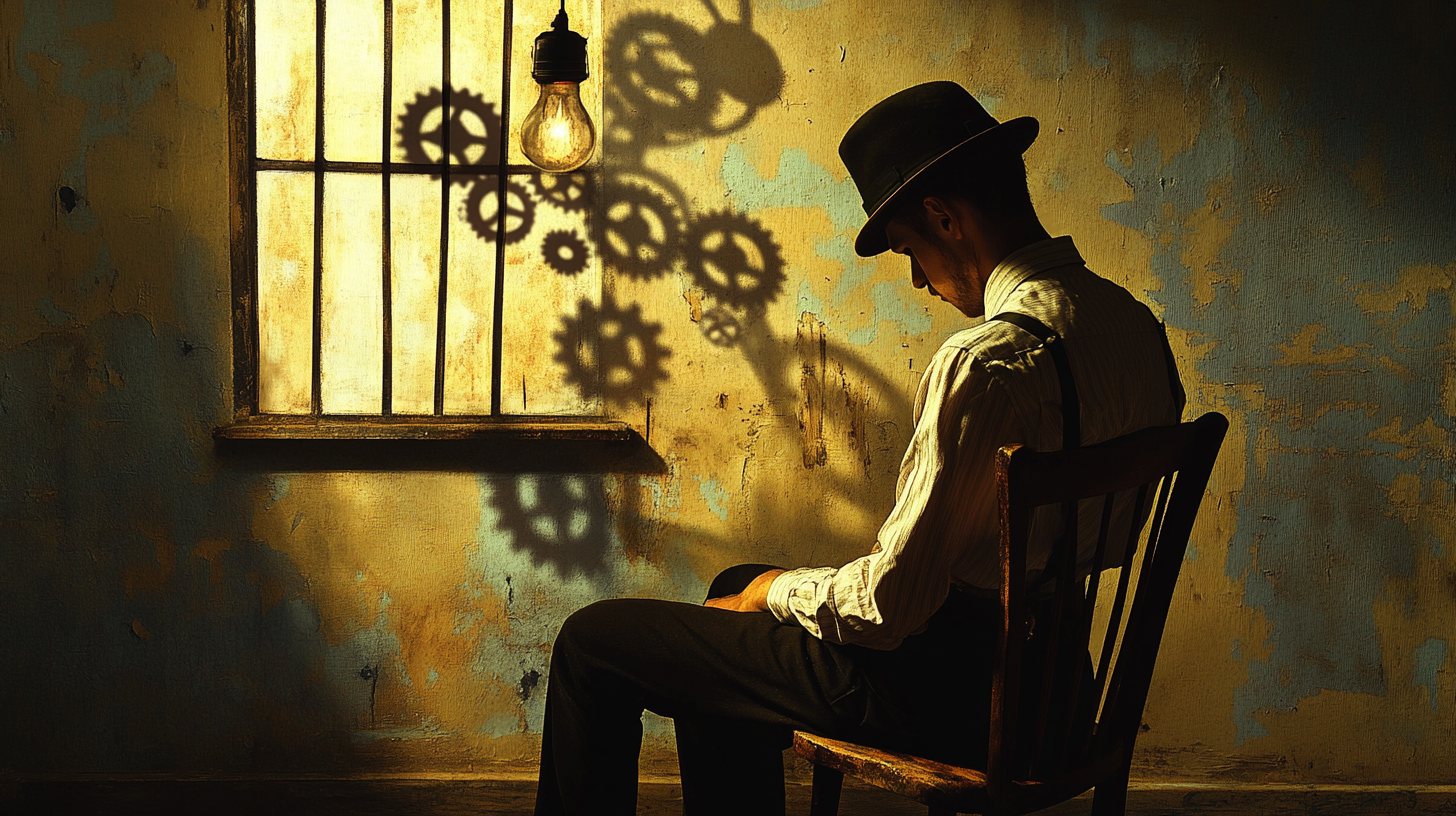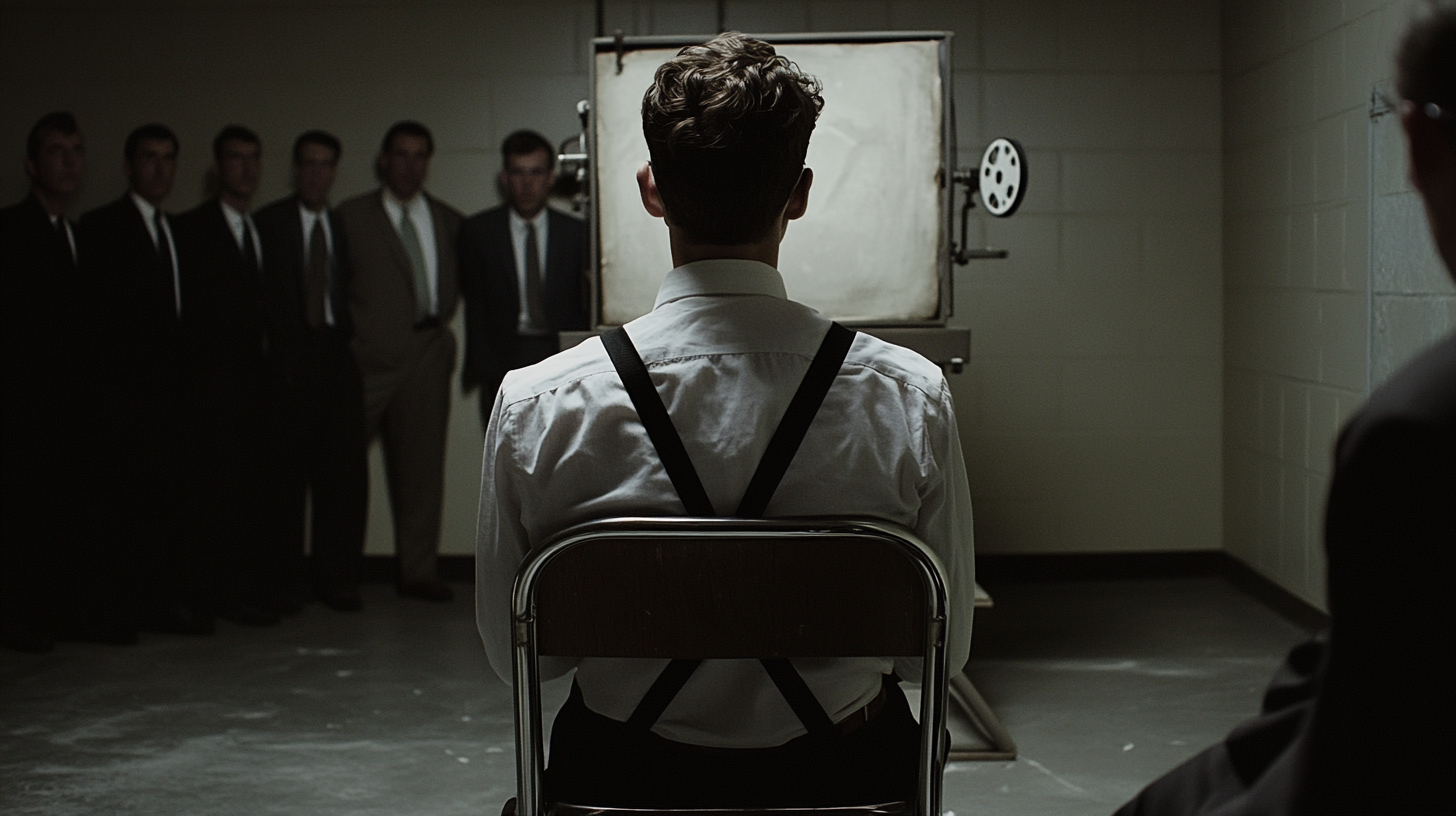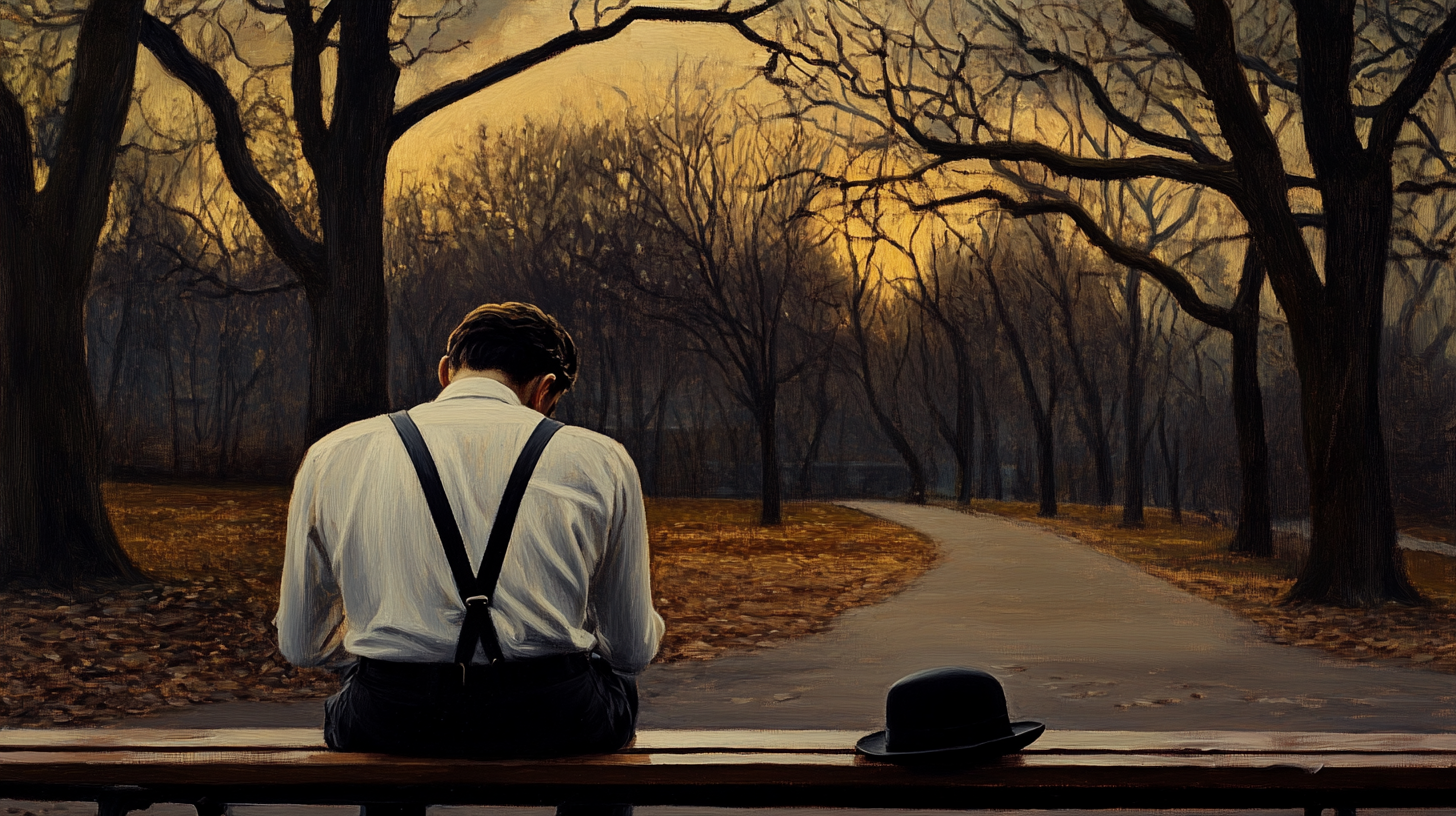Freedom or Order in A Clockwork Orange
A sharp, unsettling look at Anthony Burgess's "A Clockwork Orange"—a novel that confronts free will, state control, and the moral cost of obedience.

The Machine Inside the Man
Few novels have startled readers into moral reflection the way Anthony Burgess's "A Clockwork Orange" did upon its release in 1962.
Beneath its strange slang and lurid violence is a cold question. What becomes of a man when the gears of the state grind away his ability to choose? This is the steel core of Burgess's fiction—a warning disguised as a confession, wrapped in youthful swagger and synthetic cheer.
Set in a future England riddled with youth violence and state experiments, the novel presents a dilemma not just for its protagonist but for the reader. At what point does the suppression of evil cross the boundary into the erasure of humanity? Burgess does not offer an easy answer. He leaves the reader staring into the mirror of a society that prefers mechanical peace over free chaos.

What first unsettles readers is not the subject matter but the language itself. Burgess's invented dialect, Nadsat, works as both armor and a trap. It forces the reader to work, to translate, to engage with each page. The reward is a deep immersion into the mindset of a narrator who is articulate, remorseless, and disarmingly reflective.
Published in the early 1960s, "A Clockwork Orange" appeared during a time of shifting cultural norms and growing unease about the role of authority. Yet its message reaches far beyond its own decade. The novel remains a touchstone for debates about morality, criminal reform, and the limits of state power. Its futuristic shell hides an older question. What is man if not a creature of his own choosing?
"A Clockwork Orange" offers no comfort. What it does offer is a test of belief, of tolerance, and of the reader's own convictions. In that sense, it may be more relevant now than ever.
The Dystopia We Choose
The world of "A Clockwork Orange" is not a far-off galaxy or alien terrain. It is a twisted version of the modern city, where broken windows, idle youth, and apathetic adults paint a picture of creeping decay. Burgess gives us no grand apocalypse. Instead, he shows a civilization unraveling not through war or plague but through a slow surrender of virtue.

At the center of this landscape is a boy who thrives on violence. He does not fight for revolution or ideology. He fights because he can. In this world, authority is either weak or cruel, and neither offers true guidance. The state's eventual answer to disorder is not wisdom or justice but manipulation.
Burgess draws a society that chooses convenience over conscience. Rather than restore the moral fiber of its citizens, the government opts for control by artificial means. This decision reflects a deeper sickness—a belief that the ends justify the means, even when those ends strip away the human soul. What appears to be order is really another kind of chaos.
The novel does not waste time explaining its future. There is no deep backstory or list of new laws. The reader is dropped into a world already off course. This restraint strengthens the story. Burgess assumes that the reader can recognize the signs of decline on his own. In doing so, he makes the setting feel more real. It is not a warning about tomorrow. It is a commentary on today.
Clockwork Language
One of the most daring elements in "A Clockwork Orange" is its language. Burgess created Nadsat as a fictional teen slang, blending Russian, English, and invented terms. At first, the reader stumbles through its odd sounds and twisted meanings. But over time, the rhythm becomes familiar, like learning to think in a foreign tongue.

This language does more than decorate the novel. It distances the reader from the violence while drawing him deeper into the narrator's mind. By cloaking brutal acts in unfamiliar words, Burgess forces the reader to pay closer attention. The effect is jarring but deliberate. It keeps the story from becoming just another tale of crime and punishment.
The first-person narration works hand in hand with the slang. The narrator speaks directly, with charm, confidence, and a strange kind of honesty. His voice never wavers, even when the story turns bleak. That steady tone is part of what makes the novel so unsettling. The reader is not guided by a hero or a judge. He is pulled along by someone who sees no need for apology.
Burgess's use of language is not a gimmick. It is a tool that shapes how the reader thinks and feels about every scene. It creates distance but also intimacy. It hides the worst truths while revealing others. In this way, the novel becomes more than a story. It becomes a moral puzzle. To understand it, the reader must learn to listen differently.
That challenge is what gives the novel its staying power. It does not beg for sympathy. It demands attention.
Morality and Machinery
At the heart of "A Clockwork Orange" is a question that predates science fiction itself. Can a man be truly good if he has no choice? Burgess uses the machinery of the future to press this ancient problem. He replaces the old chains of sin and virtue with wires and chemicals, yet the struggle remains the same. What happens when the will is no longer free?

The novel does not lecture. It presents a series of choices, each one narrowing as the story moves forward. The state sees its citizens not as souls but as systems to be repaired. When those systems fail, the state turns to conditioning, hoping to build peace through programming. The method is clean and scientific. The result is something less than human.
This forced correction is not healing. It is hollowing. A man who cannot choose evil cannot choose good either. He simply reacts. Burgess makes the reader feel the weight of that loss. It is not just the violence that is troubling. It is the quiet afterward, the absence of will. In trying to perfect the citizen, the state removes the part that makes him a man.
Yet the novel also resists simple answers. The protagonist is no martyr. He begins as a willing agent of cruelty, not a victim. The reader may recoil from him, but he must also ask what justice looks like. Can society correct behavior without crushing the spirit? Can order exist without freedom?
Burgess offers no solution. Instead, he shows the cost of every path. The story reveals that control and chaos are not opposites but twins. Both lead to destruction when separated from virtue. It is not enough to prevent crime. A healthy society must nurture conscience.
In this way, "A Clockwork Orange" stands apart from many dystopian novels. It does not fear the future because of what machines might do to men. It fears what men might do with machines to each other. The greatest danger is not technology or crime. It is the belief that force can replace moral truth.
That belief leads to a world that is quiet, orderly, and entirely hollow. And that, Burgess suggests, is the real horror.
A Man, Not a Machine
More than sixty years after its publication, "A Clockwork Orange" still provokes discomfort and debate. It is not a book one forgets. Its world is too strange, its questions too sharp, and its voice too persistent. Burgess did not write to entertain. He wrote to unsettle.

What makes the novel endure is not just its language or its violence. It is the clarity with which it confronts the price of order. Many science fiction stories fear technology running wild. This one fears it being tamed. The future here is not full of sparks and circuits. It is quiet and clean—and hollow.
Burgess understood something many writers miss. A society that removes choice in the name of safety does not preserve virtue. It replaces it with obedience. That may bring peace, but it comes at the cost of the soul. A man who cannot sin cannot be saved.
For readers today, "A Clockwork Orange" remains a challenge. It asks where we draw the line between justice and control. It offers no safe harbor. But that is its strength. It does not try to make the reader comfortable. It tries to make him think.
This is not a novel for everyone. But for those willing to wrestle with it, the reward is great. "A Clockwork Orange" is a dark mirror and a test of conscience. It reminds us that the power to choose, even badly, is part of what makes us human. And that is something no machine can replace.

